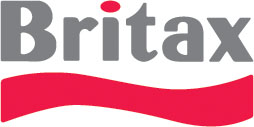 Did your child start school this year or just go back to school? Have you given thought to the drop off line at school or even car pooling and booster seats? This week, we held a very important teleclass, led by Sarah Tilton, Child Passenger Safety (CPS) Advocate for BRITAX, also our generous co-sponsor.
Did your child start school this year or just go back to school? Have you given thought to the drop off line at school or even car pooling and booster seats? This week, we held a very important teleclass, led by Sarah Tilton, Child Passenger Safety (CPS) Advocate for BRITAX, also our generous co-sponsor.
During class, Sarah covered determining when your child is ready for a booster seat, the use of a car seat (with a harness) or a booster seat, appropriate fit, use and ease of use features of booster seats, dealing with car pools and transporting children who are not your own, determining when your child is ready for the vehicle seat belt, safety tips when bringing children to school in a taxi or bus and more!
In case you missed it, you can find a link to the recorded teleclass HERE.
The following are more in-depth guidelines on transporting your little ones, which Sarah covered during class:
Child Safety Seat Guidelines Keep Kids Safe in the Car (by USA.gov)
The National Highway Traffic Safety Administration (NHTSA) regulates car seats based on recommendations for different age groups (the federal standard is not based on age groups. However, they do have best practice recommendations by age group. There are different recommendations for children’s age groups ranging from birth until 12 years old.
Children should be kept in a rear facing car seat for as long as possible, especially when they are one or younger. Only when they have reached the correct height and weight for a front facing car seat, as stated by the manufacturer, should you transfer them to that type of safety seat.
Once your child outgrows the front facing car seat, usually between the ages of 4 to 7, you should move them to a booster seat in the back seat of your car. They should remain in a booster seat until they can fit in a seat belt properly.
According to the NHTSA for a seat belt to fit properly the lap belt must lie snugly across the upper thighs, not the stomach. The shoulder belt should lie snug across the shoulder and chest and not cross the neck or face, and your child should ride in the back seat because it’s safer there.
Each state has its own laws regarding which car safety seats you must use. Make sure to know your state’s laws before buckling your child in.
* * * * *
According to a new NHTSA survey (originally posted on the Kidssafe.org website) the following are the five most significant and commonly observed mistakes made by parents and caregivers when using and installing car seats and booster seats:
- Wrong harness slot used – The harness straps used to hold the child in the car seat were positioned either too low or too high;
- Harness chest clip positioned over the abdomen rather than the chest or not used at all;
- Loose car seat installation – The restraint system moved more than two inches side-to-side or front to back; anything more than one inch is too much.
- Loose harness – More than two inches of total slack between the child and the harness strap; there should be no slack.
- Seat belt placement was wrong – Lap belt resting over the stomach and/or shoulder belt on the child’s neck or face.
See more about these common mistakes HERE.
* * * * *

For your ongoing reference and support, here are some links that Sarah shared during the class:
- http://www.britaxusa.com/learning-center
- http://www.faa.gov/passengers/fly_children/
- http://www.safekids.org/find-your-safe-kids
- http://www.safercar.gov/parents/index.htm
- http://www.healthychildren.org/english/safety-prevention/on-the-go/Pages/default.aspx
Safe and happy travels!
Co-Sponsored by
Sarah Tilton is the Child Passenger Safety Advocate for BRITAX Child Safety, Inc. As an active CPS Technician (2002 and Instructor (2004), Sarah is the spokesperson for BRITAX within the advocacy community participating in child passenger safety activities at a local, state and national level. Sarah serves on the new product development, technical writing and marketing teams at BRITAX. In addition, she managed and developed the training curriculum for the BRITAX Consumer Services department and organized and implemented a permanent checking station at BRITAX during 12+ years with the company. Sarah is currently active with the Safe Kids South Carolina, Safe Kids York County (SC), Safe Kids North Carolina, and Charlotte Mecklenburg (NC) coalitions. She is also a member of the NC Child Passenger Safety Training Committee and the National Child Passenger Safety Board representing the At Large population and the Vice-Chair of the Manufacturers Alliance for Child Passenger Safety.
Like what you read? Sign up for our free newsletter so you can be informed of the latest FREE webinars & teleclasses, parenting articles, & weekly raffles.
The views and opinions expressed on this blog are purely the blog contributor’s. Any product claim, statistic, quote or other representation about a product or service should be verified with the manufacturer or provider. Writers may have conflicts of interest, and their opinions are their own.






Comments are closed.